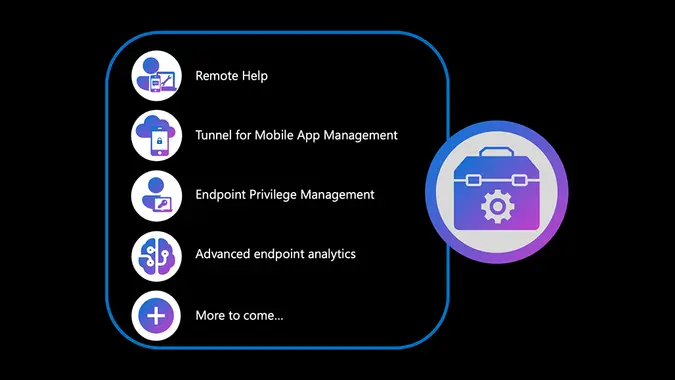While Microsoft is preparing the early 2023 Microsoft Intune Advanced Endpoint Analytics solution public preview, I will kickstart the waiting time with my personal ramblings regarding Digital Employee Experience (DEX) and organization readiness.
With hybrid work becoming the norm and workplaces more complex than ever, technology offered to employees plays an even greater role in employee productivity.

According to a Gartner Press Release from October 29, 2019, only 13% of employees are largely satisfied with their work experiences.
And Gartner says, employee experience remains a top talent concern for HR leaders, yet 46% of surveyed employees report they are largely dissatisfied with their overall experience at their organization.
Rather than using an investment-focused approach, organizations should focus on shaping how the employee experience feels. This approach to improving employee experience satisfaction focuses on influencing and improving employees’ feelings about their overall experience using psychological, motivational and social principles.
Advanced Endpoint Analytics is part of the Advanced Endpoint Management product family, expected to be generally available around March 2023, and will include Remote Help, Microsoft Tunnel for Mobile Application Management, Endpoint Privilege Management, as well as Advanced Endpoint Analytics, App patching and packaging, and more.
References:
- Introducing advanced Endpoint analytics with Microsoft Intune Suite
- Microsoft Advanced Endpoint Management
- Reduce your overall TCO with a new Microsoft Intune plan
- The Microsoft Intune Suite fuels cyber safety and IT efficiency
- What are advanced Endpoint analytics
Digital Employee Experience (DEX)
Digital Employee Experience (DEX) is a term that captures how employees feel about their interactions with the technology they use at work. It includes aspects such as the performance, usability, availability and security of the devices, applications and networks that enable employees to perform their tasks. Digital Employee Experience (DEX) also reflects the impact of technology on employees’ well-being, productivity, engagement, and satisfaction.
A positive DEX can help organizations attract and retain talent, foster innovation and collaboration, improve customer service and satisfaction, and increase operational efficiency and agility. A negative DEX can lead to frustration, stress, disengagement, turnover, and poor performance.
Therefore, measuring and improving DEX is a strategic priority for many organizations that want to leverage technology as a competitive advantage and create a culture of excellence. To achieve this goal, organizations need to adopt a user-centric approach that considers both the technical and human aspects of DEX.
Most Companies Struggle to Manage Digital Employee Experience
And that results in headaches for employees and IT alike. Employees want to make an impact for the business, but they keep suffering from the same slowdowns, crashes, and disruptions that hamper their productivity. IT teams want to help employees, but they’re overwhelmed by support tickets and lack the context they need to resolve issues quickly.
According to Gartner , employees who are dissatisfied with workplace applications are twice as likely to leave their job.
Gartner survey found that only 13% of employees are fully satisfied with their digital experience at work. In response, many organizations have been making significant investments, both in time and money, to improve employee engagement .
The market for digital employee experience platforms seems to be significantly increasing pots pandemic. In a recent survey of C-level executives, 90% reported that DEX was a medium to very high priority.
Summary
While Microsoft is preparing the early 2023 Microsoft Intune Advanced Endpoint Analytics solution public preview, and as mentioned above, 90% of the asked C-level executives, reported that DEX was a medium to very high priority, seem high, especially when looking at the IT landscape I and others must deal with on a daily basis.
While C-level executives is in the market for another black box for their environment, to be able to report on what we already know, employees are asking the higher gods to make their computer just a little faster - I have stopped counting how many times I have been involved in slow logins due to old and outdated login scripts, poorly managed profile management, outdated software and misconfigured security products. Adding to that, security products combined with several layers of products that is implemented to the same thing, e.g., Endpoint Security products with bolt-on firewall functionality, and other fancy functionality - however no-one in the security department has the knowledge or the interest in disabling the built-in features, to prevent the device from stumble upon simultaneously processers, slowing the device unnecessarily down.
The same you can say about DEX. I worked with many organizations, who is somehow stuck on on-premises deployment solutions, e.g., Microsoft Configuration Manager, however the organizations have failed to enroll their devices into Microsoft Intune, to gain insight to their end user platform.
Microsoft Intune has been offering Endpoint Analytics for years, and why organizations haven’t enabled this (without doing anything else) is a mystery to me. Yet, projects are made, to built and bolt-on more agent to endpoint devices, when organizations should start the journey with tools already in the toolbox and start fixing the legacy issues, before adding just another solution.
Want to know more about what Endpoint analytics is and how to enable your devices for Endpoint Analytics?
Happy exploring.
–Jesper